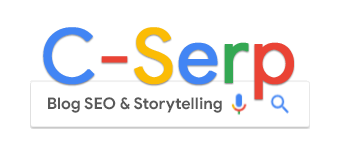How to make ecommerce product pages work in an AI-first world

Most ecommerce product pages weren’t built for how people shop today.
They were written for humans scanning specs – not for AI tools filtering, summarizing, and recommending products behind the scenes.
But AI is now your new sales rep. And unless your product detail pages offer the right kind of context, they’ll be skipped entirely.
This article tackles:
- How AI changes product discovery.
- Why context matters more than keywords.
- What to include in your PDPs to stay visible – and persuasive.
From sales rep to (AI) rep
Over the past 20 years, we’ve watched the buying process shift dramatically – from physical stores and printed catalogs to Amazon and ecommerce brands of every size.
Back then, you’d speak with a sales rep who asked:
- What you were looking for.
- What you planned to do with it.
- Whether you had a preference for certain materials or brands.
If you were lucky, they already knew a bit about you and might hand you Levi’s jeans the moment you walked in.
Then came the ecommerce era, with product pages listing features, facts, and specs.
Now, with AI, we’ve come full circle.
Once again, we’re “talking” to something – only this time, it’s a chatbot or LLM:
- Asking qualifying questions.
- Offering personalized options.
- Often knowing far more about us than any human ever could.
Whether you’re doing SEO for a Shopify or WooCommerce site, running an ecommerce brand, or selling on Amazon, thinking of AI as your new sales rep is a helpful mindset shift.
It’s no longer just about what your product is – it’s about how well the machines understand who it’s for and why it matters.
Who will be reading your product descriptions?
With the growing adoption of AI tools, more intermediary apps and platforms are emerging to handle a wide range of use cases:
- Conversational assistants guide users through product selection by asking qualifying questions.
- AI recommends products based on purchase history and browsing behavior.
- It analyzes reviews to highlight key features or concerns.
- It adjusts pricing dynamically based on real-time demand and competitor data.
What we see across platforms is the same process:
- Information > AI > Revised output
AI pulls information from the web, processes it, and provides a refined answer or suggestion.
The more users rely on these tools, the fewer decisions are made without AI’s involvement.
Take Amazon, for example. It now summarizes product reviews so users don’t have to read hundreds of them.

In many industries, fewer and fewer customers will read your product descriptions directly.
Instead, they’ll accept filtered, pre-selected information as a starting point.
Dig deeper: How to leverage cosine similarity for ecommerce SEO
A role play to understand probability
Imagine you’re selling cars at Toyota. When someone walks into the dealership, you can’t recommend a car without knowing the context.
But once you learn she’s a married mother of two who sometimes drives her father to the hospital and enjoys hiking, the choice becomes much easier.
Here’s how Claude would approach a general query:

It’s all about narrowing down the context to formulate a better question.
Context is king
The more context AI has, the better it can form internal questions, run additional queries, and refine results, similar to how Google expands a query behind the scenes.
This added context improves the quality of answers or generated content.
A simple transactional search on Perplexity, for example, triggers nine different sources to build a broader response with related follow-ups.

While it’s clear context matters, many ecommerce sites still rely on thin, manufacturer-copied product descriptions.
There are better ways to provide context, like using advanced schema markup. For example, the product type’s usageInfo or audience fields
Platforms like Shopify surface basic schema based on product attributes, but aren’t ready for deeper markup out of the box.

Join the dots on your product detail page
To appear in AI-driven search results or chats, your product pages must connect:
- What you’re selling.
- Why someone wants to buy it.
- What they need it for.
Just like a Toyota sales rep might instantly think of a RAV4 or Land Cruiser when a customer mentions hiking, mountains, and off-road trips, your product pages should reflect use cases and intent.
When writing a product description, imagine a conversation with the buyer:
- What would you ask them?
- What might they say?
- What would they need to know?
This exercise helps uncover what to include in your product descriptions, feature lists, FAQs, and more.
A quick role play with your AI tool of choice can be a great source of inspiration.

Product description makeover: From generic to context-rich
Here’s a simple example of a typical product description – before, and after enriching it with additional context:
Before:
- “Waterproof hiking boots. Gore-Tex construction. Available in sizes 7-12. Black, brown, tan colors.”
After:
- “Waterproof hiking boots engineered for serious outdoor enthusiasts who tackle challenging terrain in unpredictable weather. The Gore-Tex construction keeps feet dry during stream crossings and sudden downpours, while the aggressive tread pattern provides confidence on loose rock and muddy trails. Ideal for multi-day backpacking trips, day hikes in mountainous regions, and anyone who refuses to let weather dictate their outdoor adventures. Temperature rated for conditions down to -20°C.”
Key difference: The optimized version answers “who is this for?” and “what problems does it solve?” – not just what it is.
Dig deeper: How to use generative AI to create product descriptions from your reviews
Expanded context across collection pages
Collection (or category) pages have long been a key part of ecommerce SEO.
For broader searches, AI tools often link directly to category pages, especially when the products are similar (e.g., sunglasses).
That makes context on collection pages critical, not just on the page itself, but also through content from internal and external pages that link to it.
Two ways to surface the context AI needs
One of the most effective strategies over the past 15+ years has been interviewing customer service and sales teams.
Their insights into top questions, common concerns, and specific use cases have proven invaluable.
For large ecommerce sites, though, this isn’t always scalable.
When working with 70,000 SKUs, you can’t optimize every description individually. Instead, you can build scalable systems to gather insights and boost visibility.
1. Manually gathering context
If you’re researching stand-up paddle boards, search Google for something like site:reddit.com “SUP board” to surface real user discussions.
Export results with a Chrome extension, then analyze them using your AI tool of choice.
2. Automation and AI
Modern automation tools, paired with scraping and LLMs, can surface deep customer insights at scale.
This lets you build a continuously updating context database to support PDP and collection page content.
You can pull data from sources like Reddit, Quora, Amazon, or niche Facebook groups and process it within minutes.
Tool stack:
- Apify for Reddit/Quora scraping.
- OpenAI API for context analysis.
- Airtable for context database.
- N8n for workflow automation.
Implementation process
- Data collection: Set up n8n to regularly scrape target threads or posts using Apify (e.g., Reddit discussions on your product category).
- AI analysis: Run the scraped content through a prompt like:
- Analyze these discussions about [product category]. Extract:
- Common use cases and scenarios.
- Frequent pain points mentioned.
- Specific conditions/environments discussed.
- Demographic indicators.
- Analyze these discussions about [product category]. Extract:
- Context database: Store results in Airtable or Google Sheets with fields like:
- Use case scenario.
- Target demographic.
- Problem solved.
- Seasonal relevance.
- Confidence score.
- Auto-refreshing: Use n8n to automate regular updates and trigger notifications when new insights are available – so you can quickly apply them across product and collection pages.
Start improving your product detail pages today by adding a simple sentence to each description beginning with:
- “Ideal for…”
- “Perfect when…”
Just this small addition can help your product attract more of the right buyers.
Write product pages that AI recommends – and customers buy
Customer behavior is shifting fast.
Depending on your audience, potential buyers may now spend more time in ChatGPT or Google’s AI Mode than on traditional search.
AI tools aim to match user prompts with their conversation history and known preferences to suitable products.
Supplying rich context on your product and collection pages helps AI connect your offer to a user’s specific use case.
Start with your top 20 products. Identify:
- The problems they solve.
- Where they excel.
- Who they’re for.
- When they’re ideal.
This context-driven approach sets your products up for discovery in an AI-powered world.
Dig deeper: Retailers: Google is becoming your new category page


